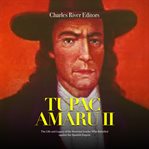Nonfiction
eAudiobook
Details
PUBLISHED
Made available through hoopla
EDITION
DESCRIPTION
1 online resource (1 audio file (2hr., 08 min.)) : digital
ISBN/ISSN
LANGUAGE
NOTES
Read by Colin Fluxman
By the time Christopher Columbus started setting east from the New World, he had explored San Salvador in the Bahamas (which he thought was Japan), Cuba (which he thought was China), and Hispaniola, the source of gold. As the common story goes, Columbus, en route back to Spain from his first journey, called in at Lisbon as a courtesy to brief the Portuguese King John II of his discovery of the New World. King John subsequently protested that according to the 1479 Treaty of Alcáçovas, which divided the Atlantic Ocean between Spanish and Portuguese spheres of influence, the newly discovered lands rightly belonged to Portugal. To make clear the point, a Portuguese fleet was authorized and dispatched west from the Tagus to lay claim to the "Indies," which prompted a flurry of diplomatic activity in the court of Ferdinand and Isabella. At the time, Spain lacked the naval power to prevent Portugal from acting on this threat, and the result was the hugely influential 1494 Treaty of Tordesillas. Peru and Upper Peru (what is now Bolivia) were complex colonies, the results of Spanish cultural and political domination forcibly merged with the remains of the Incan realm and indigenous religions and traditions. The Spanish language and Catholicism were also dominant, superimposed on a substrate of native people, who spoke such languages as Quechua and Aymara and quietly continued to practice aspects of traditional religions. The Incas had consolidated their empire only a century before Pizarro and his Spanish conquistadores took control of Inca lands in the 1530s. The Incan heartland was the Andes Mountains from Ecuador down through Peru into parts of northern Chile, including what is now Bolivia, some of Argentina, and in the north, bits of what is now Colombia. It covered about 770,000 square miles, far larger than Spain, and held an estimated 14 million people, more than in Spain, comprised of many different indigenous groups. Lima was the seat of the Viceroyalty of Peru, which included almost all of the Spanish colonial region in South America. Then, Peru meant today's Peru, Ecuador, and parts of Chile, and in the mid-18th century, a new Viceroyalty of La Plata was set up, based in what is now Buenos Aires. Upper Peru was centered on La Paz and Chuquisaca (since renamed Sucre after the hero of independence), and Peru was centered on Lima and Cuzco. The addition of La Plata as a viceroyalty refocused the necessary slow of silver from Lima and Peru to Buenos Aires and the Atlantic. The Audiencia of Charcas (Bolivia) was placed under La Plata's authority. In one sense, the Spanish conquest was simply a shift of empires for the indigenous peoples. The Incas were as imperialistic as Spain, and they put down rebellions with the same ferocity. However, Incan rule was generally mild and concerned with the welfare of the empire's people. The indigenous people chafed under Spanish rule, and the lost Incan days were idolized in popular memory. This set the stage for one of the most famous and mythologized conflicts in the history of the Americas
Mode of access: World Wide Web







